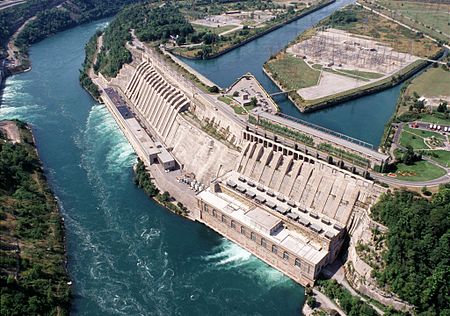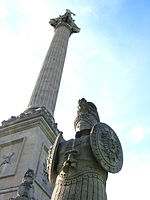Sir Adam Beck Hydroelectric Generating Stations

Sir Adam Beck Hydroelectric Generating Stations are two hydroelectric generating stations in Niagara Falls, Ontario, Canada. Sir Adam Beck Generating Station I, Sir Adam Beck Generating Station II and the Sir Adam Beck Pump Generating Station are all owned by Ontario Power Generation. Following the development of several smaller generating stations around Niagara Falls in the late 19th and early 20th centuries, the Province of Ontario authorized the construction of the first major publicly owned generating station in the province. At the time it was built, it was the largest hydroelectric generating station in the world. The stations divert water from the Niagara and Welland rivers above Niagara Falls which is then released into the lower portion of the Niagara River, and together produce up to 1,962 MW (2,631,000 hp).
Excerpt from the Wikipedia article Sir Adam Beck Hydroelectric Generating Stations (License: CC BY-SA 3.0, Authors, Images).Sir Adam Beck Hydroelectric Generating Stations
Niagara Parkway, Niagara Falls
Geographical coordinates (GPS) Address Nearby Places Show on map
Geographical coordinates (GPS)
| Latitude | Longitude |
|---|---|
| N 43.1475 ° | E -79.044722222222 ° |
Address
Niagara Parkway 1640
L2E 2S7 Niagara Falls
Ontario, Canada
Open on Google Maps








